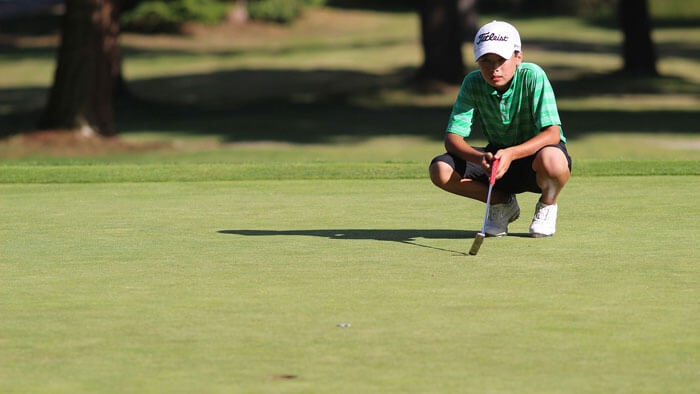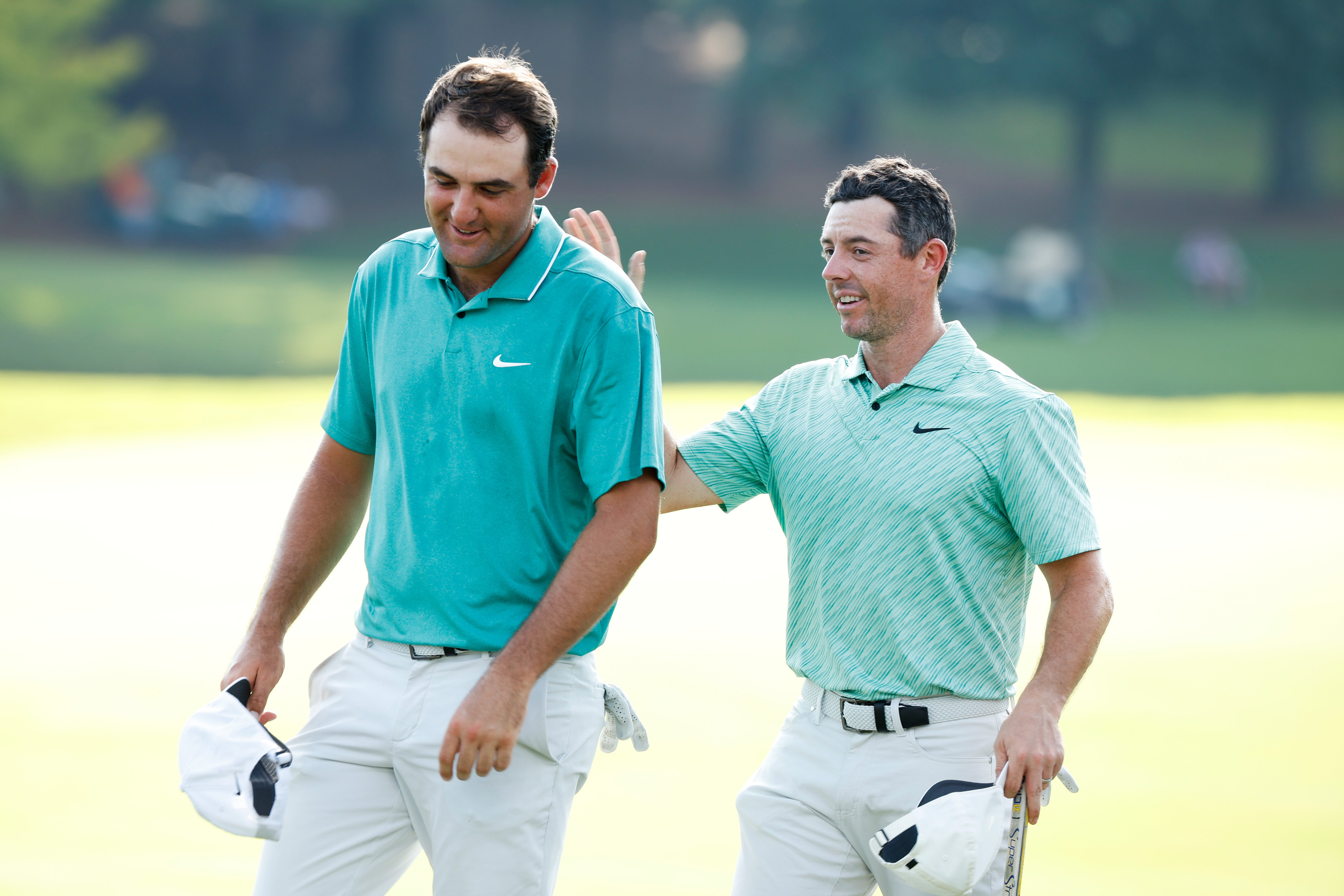Golf Instruction
Even the Best Can Chunk it Like the Rest
Recently I was out working with some of our younger Academy Students on pitch shots when I was reminded of the many foibles Tiger Woods was having around the greens last year. As Woods hit chunk after skull after chili-dip you could see the frustrated look of disbelief on his face and could only imagine that he wanted to be just about anywhere else than in front of a national T.V. audience of millions. It was both an ironic and painful turn of events to see arguably the best of the best, a player who not long ago relished the spotlight, wilt under it when confronted with shots that for most of his career were essentially his calling card.
Watching the kids that day, I was struck with how different they approached each attempt than most adults (including Woods) do. Consequently, you see a stark contrast between why the kids hit poor shots and why we see their parents/grandparents do. I’m not saying you can’t pick out a few commonalities when you analyze the mechanics of their successes and failures, but at the risk of painting everyone with a broad brush, I would say that there are two distinctively different ways in which kids approach the short game and short pitches and the way their parents (or the rest of us) approach the short game and why we struggle with the very same shots the kids often make look easy.
Let’s start with the kids. Kids, by their very nature and especially at early age, are for the most part fearless when it comes to the game. They approach each shot with a sense of joy, curiosity, and eagerness and for the mostly one goal; hit it in the hole.
The kids rarely ask too many questions, they’re usually content to try and discover what to do on their own, but when they do, it’s usually something like, “How do I hit this shot?” What club should I use?” “How do I control the distance?” “How do I put spin on it like the pros?” And when they want answers to these questions it’s because for them the learning process is fun and holds the key to improvement (and even more fun). Essentially, kids approach pitching the ball with what is known as Beginner’s Mind, and as a result their expectations are low and they view any failures as merely steps along the path to mastery.

Photo via Flickr
Now if you’re unfamiliar with it, Beginner’s Mind is a concept in Zen Buddhism which refers to having an attitude of openness, enthusiasm, creativity, and a lack of preconceptions when studying a subject and it is an ideal mindset and approach for one to carry with you even after attaining an advanced level of expertise in any given discipline. The Zen teacher Shunryu Suzuki, has been quoted as saying, “In the beginner’s mind, there are many possibilities, in the expert’s mind there are few.” And if you’re willing to adopt it, this approach toward the short game, and pitching in particular can make it one of the most fun areas of the game to practice and some of the most rewarding types of shots in the game when successfully executed.
When it comes to adults, however, there is another factor we have to deal with that makes teaching these delicate shots around the green an entirely different proposition. Ego. Adults have typically played the game much longer than kids and very often that sense of limitless possibility, in an adult’s mind, translates into an endless possibility of embarrassing themselves. Now most golfers aren’t experts, and have never come close to mastering the technique necessary to pitch the ball properly, but that doesn’t change the fact that the level of expectation on these shots and the amount of their self worth that they attach to the successful execution of it (or any other golf shot for that matter), is typically much higher than kids.
When the average adult sees me for a pitching lesson, instead of coming armed with Beginner’s Mind type questions, they typically arrive with ones like, “Can you teach me to stop chunking it?” “How do I get rid of my chili-dip?” “I’m tired of embarrassing myself, can you help me?” or the #1 desperate plea, a question typically muttered in hushed tones on some lonely corner of the practice tee for fear that others might hear is, “I’ve got the shanks, how do I fix it?” All of these questions speak to an element of the equation that kids, for the most part, don’t have to deal with. Fear. And that fear comes from a desire to protect our ego.
Hitting consistently good pitch shots, for the most part isn’t something (even as good players) we should always expect to do. The shot in and of itself requires a high degree of expertise, coordination, imagination, relaxation, and a willingness to practice very regularly just to become reasonably competent and even then it’s a shot that now and then can make even someone who is arguably the best to ever lace up a set of spikes (the aforementioned Mr. Woods if you forgot) look pretty silly.
Now I’m not saying we can’t learn to pitch the ball on the green and somewhere near the pin with a fair degree of regularity, but if we have the unrealistic expectation of flopping it up there high and soft next to the pin like Phil Mickelson does every time we are setting ourselves up for an unfortunate letdown. And if we allow ourselves to become letdown, embarrassed, or worse every time we fail to execute one of these shots it won’t be long before we can’t even stand over one without feeling a level of anxiety that would make even the talented Mr. Mickelson hard-pressed to execute it.
Pitch shots require a high degree of relaxation in both body and mind, and so it’s no small wonder when they go awry if we’re approaching them as if the very well-being of our first born is riding on their successful execution. And learning the subtleties of doing that in the myriad of situations we are faced with requires a certain degree of creativity and boundless optimism. That’s a pretty difficult state to attain when we are narrowly focused on the perceived consequences of missing one and the damage we allow it do to our ego. So if you’re struggling to hit these types of shots, maybe it’s time to go back to the beginning and approach them like our kids do. I’m not saying that will put an end to all the chunks, skulls, and chili-dips you heretofore have been hitting, but if you approach those opportunities with more of a Beginner’s Mind from now on it could be the fresh mental perspective that will finally allow you to relax, have fun with it again, and play your best. And when you miss? Just keep this little mantra in mind:
Even the best of the best can chunk it like the rest…
Cover Photo via Flickr
-

 News2 days ago
News2 days agoPGA Tour Loyalty Payouts Revealed: Tiger Woods Stands to Make The Most
-
News1 week ago
‘It’s Quite Nauseating’: Max Homa on Current State of Men’s Pro Golf
-

 LIV Golf Tour1 week ago
LIV Golf Tour1 week agoDENIED: Rory McIlroy’s Team Confirms LIV Golf Rumors are False
-

 Fantasy Golf Predictions4 days ago
Fantasy Golf Predictions4 days agoFantasy Golf Picks, Odds, and Predictions – 2024 Zurich Classic
-
News1 week ago
The Masters TV Ratings Were Down 20%, But What Does it Mean?
-

 News1 week ago
News1 week agoRory McIlroy Clarifies LIV Rumors — Is He Going or Not?
-
News1 week ago
The PGA Championship is Set to Return to Kiawah Island!
-

 News3 days ago
News3 days agoPGA Tour Players Who Rejected LIV Golf Offers Set to Find Out How Much Their Loyalty is Worth












